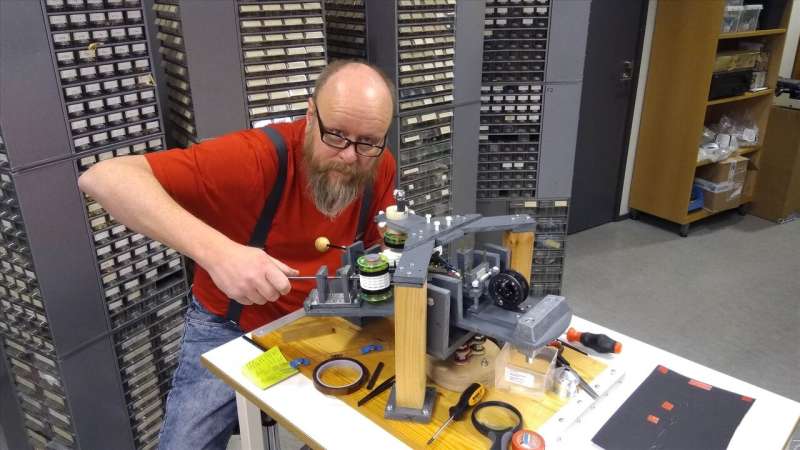Dr. Petri Toivanen (Finnish Meteorological Institute) and the tether factory. Image: Petri Toivanen.
Thin metallic tethers for Coulomb drag devices that tow satellites and spacecraft can now be produced more easily than before. Scientists of the Finnish Meteorological Institute have developed a method to produce multi-wire tether by twisting hair-thin metal wires.
The solar wind electric sail (E-sail) enables transportation in the solar system without propellant. Likewise, the plasma brake eliminates the orbital debris problem by providing low-cost reentry at the end of a satellite mission. Both exploit the plasma Coulomb drag effect. The technology requires multi-wire tethers made of hair-thin metal wires.
Scientists at the Finnish Meteorological Institute have now developed a new method to produce Coulomb drag tethers. Earlier, the Electronics Research Laboratory of the University of Helsinki produced tethers using ultrasonic bonding. The new method is simpler and is based on twisting metal wires. The method resembles the industrial production of hexagonal chicken wire mesh. It produces a four-wire tether from 0.05-mm-thin metal wires. The tether must be made of multiple wires so that it is not broken, even if micrometeoroids cut the individual wires every now and then.
"Four subwires give sufficient micrometeoroid tolerance even for full-scale E-sail and plasma brake," says Dr. Petri Toivanen of the Finnish Meteorological Institute.
The tether and the plasma brake are to be tested on the FS-1 nanosatellite of the Finnish Centre of Excellence in Research of Sustainable Space.
Provided by Finnish Meteorological Institute























